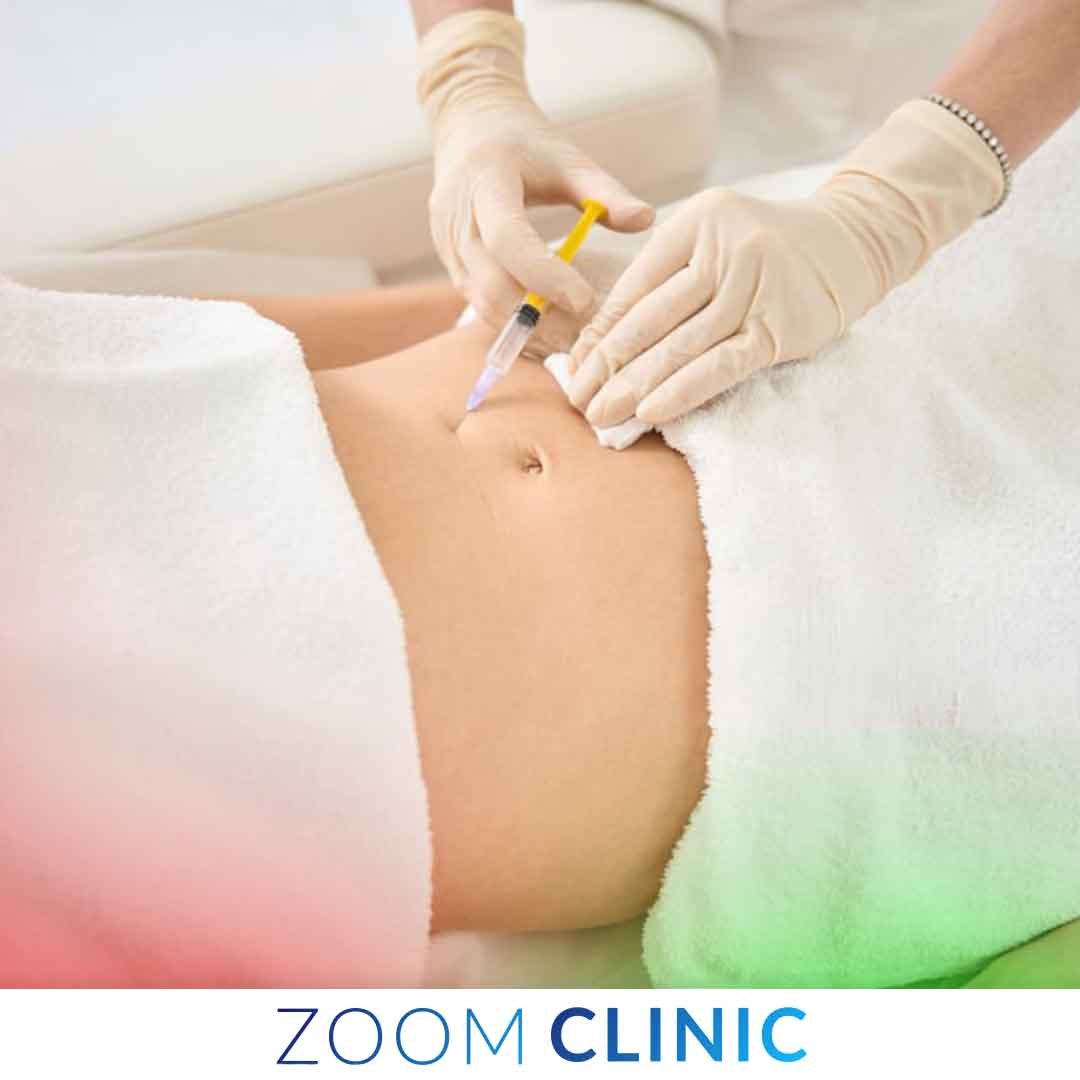The journey of motherhood is one of the most profound and transformative experiences a woman can undergo. However, the postpartum period can bring about physical changes that many new mothers find challenging. One of the most common concerns is sagging skin, particularly in the abdomen, breasts, and thighs. Understanding the causes of postpartum skin changes and exploring effective Strategies to Combat Sagging Skin can help new mothers regain their confidence and embrace their bodies after childbirth.
Table of Content
Understanding Postpartum Skin Changes
The Causes of Sagging Skin
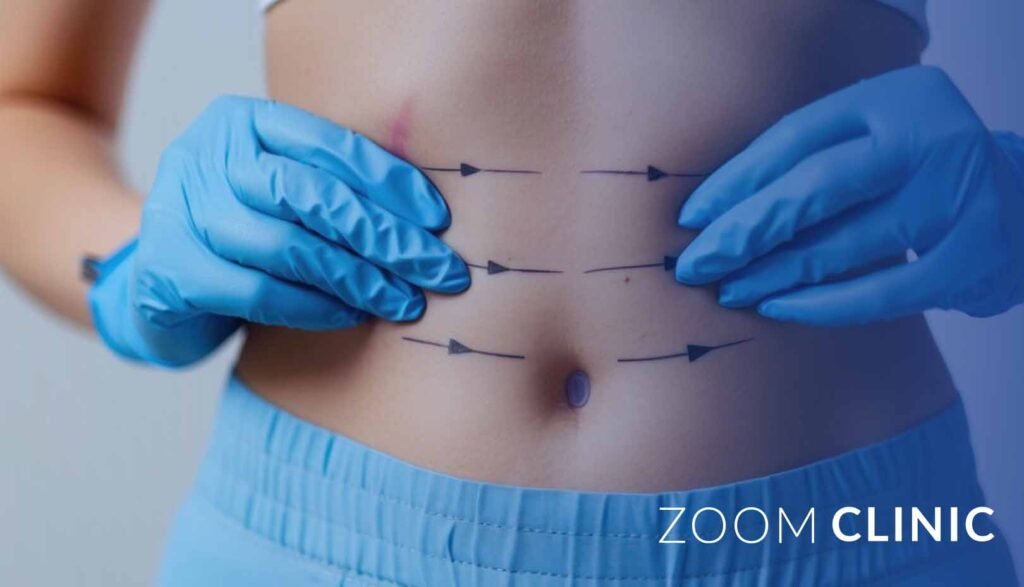
- Hormonal Changes: During pregnancy, the body undergoes significant hormonal fluctuations. These hormones help support the baby’s development but can also lead to changes in skin elasticity. After childbirth, a sudden drop in hormones like estrogen can contribute to the loss of collagen and elastin, two vital proteins that keep skin firm and elastic.
- Weight Gain and Loss: Pregnancy often involves weight gain, followed by rapid weight loss after delivery. This cycle can stretch the skin beyond its natural limits, leading to sagging as the skin struggles to contract back to its pre-pregnancy state.
- Age: As women age, skin naturally loses elasticity due to reduced collagen production. This process can be exacerbated by the physical demands of pregnancy and motherhood, making sagging skin more pronounced in older mothers.
- Genetics: Genetic predisposition plays a crucial role in how skin responds to pregnancy. Some women may have more elastic skin due to their genetic makeup, while others may be more susceptible to sagging.
- Breastfeeding: While breastfeeding is a natural and healthy part of motherhood, it can also lead to changes in breast shape and volume, contributing to sagging over time.
The Impact of Sagging Skin
Sagging skin can affect a woman’s self-esteem and body image. It’s not uncommon for new mothers to feel frustrated or insecure about their bodies after childbirth. These feelings can be intensified by societal pressures to “bounce back” to pre-pregnancy shapes quickly. However, it’s essential to recognize that every body is unique, and the postpartum journey is personal.
Effective Strategies to Combat Sagging Skin
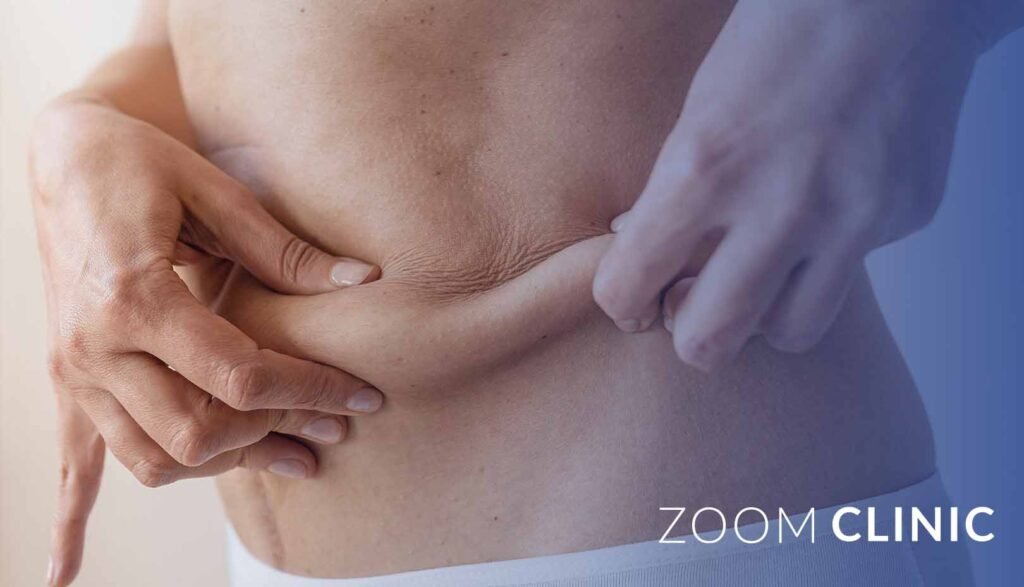
1. Nutrition and Hydration
Balanced Diet
A well-balanced diet rich in vitamins and minerals can significantly impact skin health. Consider incorporating the following into your daily meals:
- Protein: Essential for collagen production, proteins such as lean meats, fish, eggs, legumes, and dairy can help repair and rejuvenate the skin.
- Healthy Fats: Omega-3 fatty acids found in fish, walnuts, and flaxseeds support skin elasticity and hydration.
- Antioxidants: Foods high in antioxidants, like berries, spinach, and nuts, can combat oxidative stress and promote healthier skin.
Stay Hydrated
Hydration is crucial for maintaining skin elasticity. Aim for at least eight glasses of water a day, and consider incorporating hydrating foods like cucumbers, oranges, and strawberries into your diet.
2. Exercise and Fitness
Regular Physical Activity
Engaging in regular exercise can help improve muscle tone and support skin tightening. Consider a combination of the following:
- Strength Training: Building muscle can help fill out sagging skin and improve overall body composition. Focus on exercises that target key areas, such as the core, thighs, and arms.
- Cardiovascular Workouts: Activities like running, swimming, or cycling can aid in weight loss and improve circulation, which is essential for healthy skin.
- Postnatal Yoga or Pilates: These low-impact exercises can enhance flexibility, strengthen core muscles, and promote relaxation, all of which are beneficial for postpartum recovery.
3. Skincare Regimen
Topical Treatments
Investing in a good skincare regimen can help improve the appearance of sagging skin. Look for products that contain:
- Retinoids: These vitamin A derivatives can boost collagen production and improve skin texture. Start with a lower concentration and consult a dermatologist before use, especially during breastfeeding.
- Hyaluronic Acid: Known for its hydrating properties, hyaluronic acid can help plump and firm the skin.
- Vitamin C: This powerful antioxidant can brighten the skin and promote collagen synthesis, improving overall skin tone and elasticity.
Massage and Body Treatments
Incorporating regular massages or body treatments can enhance circulation and promote skin elasticity. Consider:
- Oil Massages: Using oils rich in essential fatty acids, such as almond or coconut oil, can hydrate the skin and improve its texture.
- Professional Treatments: Options like body wraps or lymphatic drainage massages can enhance skin appearance and promote relaxation.
4. Non-Surgical Cosmetic Procedures
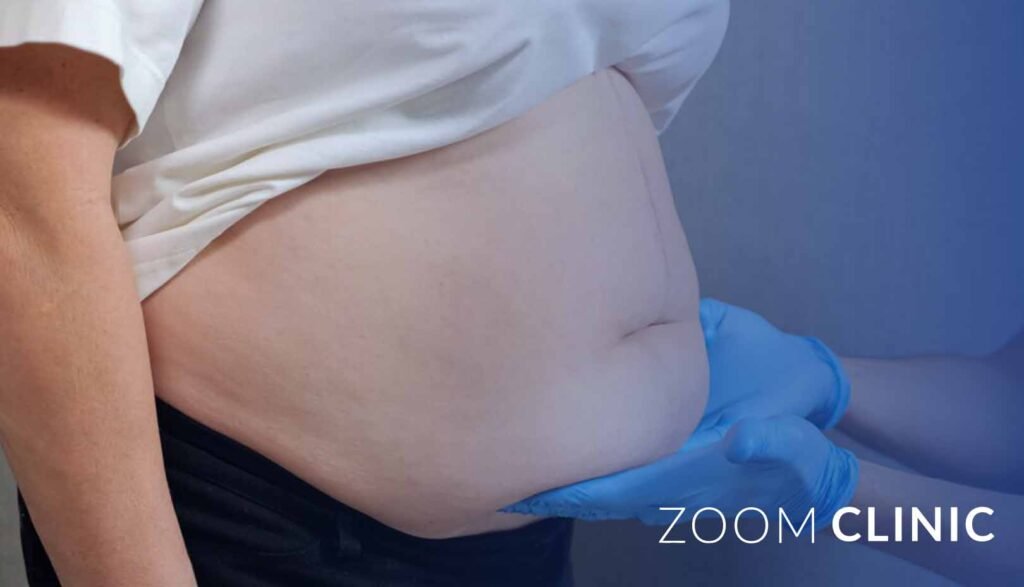
For those seeking more immediate results, non-surgical cosmetic procedures can be effective in combating sagging skin. Consult with a qualified practitioner to discuss options that may include:
Fillers and Injectables
- Dermal Fillers: Hyaluronic acid fillers can restore volume to areas affected by sagging, such as the cheeks and nasolabial folds.
- Botox: While primarily used for facial wrinkles, Botox can also be used to improve the appearance of sagging skin in some cases.
Laser Treatments
- Fractional Laser Resurfacing: This procedure uses laser technology to stimulate collagen production and improve skin texture.
- Radiofrequency Therapy: A non-invasive treatment that heats the skin’s deeper layers, promoting collagen remodeling and tightening.
5. Surgical Options
For those with more significant sagging or who desire more drastic changes, surgical options may be considered. It is crucial to consult with a qualified surgeon to explore these options:
Tummy Tuck (Abdominoplasty)
This procedure removes excess skin and fat from the abdominal area, resulting in a flatter, more toned appearance. It can be particularly effective for women who have experienced significant weight loss or have loose skin post-pregnancy.
Breast Lift (Mastopexy)
A breast lift can restore the breasts to a more youthful position, addressing sagging and loss of volume. This procedure can be combined with breast augmentation for added fullness.
Body Contouring
Procedures such as liposuction or a body lift can help reshape areas of the body affected by sagging skin, offering a more contoured appearance.
6. Lifestyle Changes
Stress Management
Postpartum life can be overwhelming, and stress can negatively impact skin health. Incorporating stress-reducing activities such as meditation, mindfulness, or hobbies can improve overall well-being and skin appearance.
Sleep
Quality sleep is essential for skin health and overall recovery. Aim for 7-9 hours of sleep per night, and establish a calming bedtime routine to promote restful sleep.
7. Seek Professional Guidance
Consulting with healthcare professionals, including dermatologists and plastic surgeons, can provide personalized advice and treatment options based on individual needs. They can help assess the extent of sagging skin and recommend suitable interventions.
Embracing the Postpartum Journey
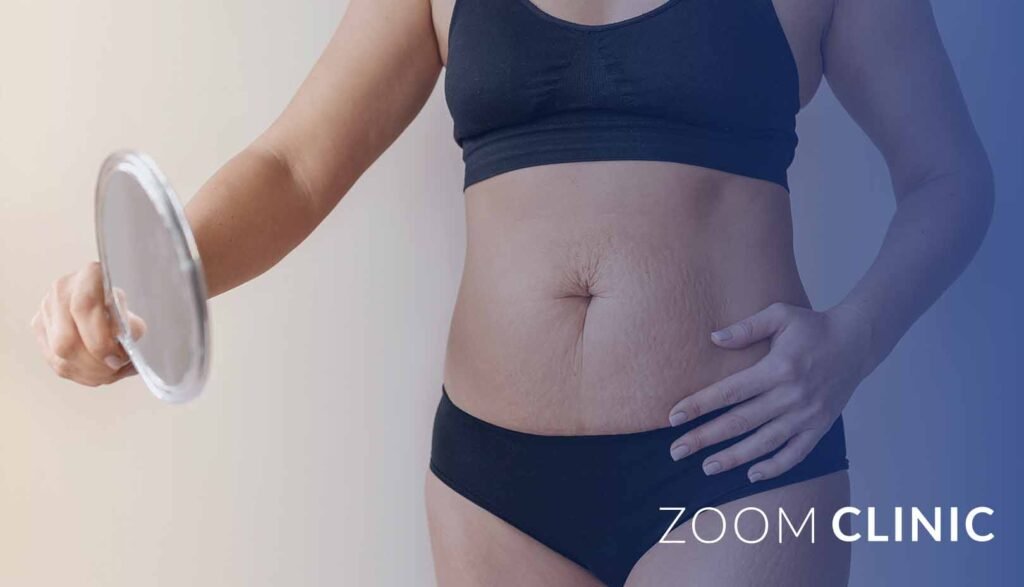
While addressing sagging skin is a valid concern for many new mothers, it’s essential to approach the postpartum journey with self-compassion. Recognizing the incredible changes the body has undergone and celebrating the new role of motherhood can foster a positive body image.
Here are five frequently asked questions (FAQs) related to transforming the postpartum body and combating sagging skin:
What causes sagging skin after childbirth?
Answer: Sagging skin after childbirth is primarily caused by hormonal changes, weight fluctuations, and the natural aging process. During pregnancy, the skin stretches significantly, and after childbirth, hormonal shifts can lead to a loss of collagen and elastin, which are essential for skin elasticity. Rapid weight loss can also contribute to sagging as the skin may struggle to contract back to its original shape.
FAQ 2: Are there effective exercises to combat postpartum skin sagging?
Answer: Yes, regular exercise can help combat postpartum skin sagging. A combination of strength training, cardiovascular workouts, and flexibility exercises like yoga or Pilates can improve muscle tone and support skin tightening. Strength training, in particular, can help fill out sagging areas by building muscle mass underneath the skin.
FAQ 3: Can dietary changes improve the appearance of sagging skin?
Answer: Absolutely! A balanced diet rich in protein, healthy fats, and antioxidants can significantly improve skin health. Foods high in vitamins A, C, and E, as well as omega-3 fatty acids, promote collagen production and skin elasticity. Staying hydrated by drinking plenty of water is also crucial for maintaining skin moisture and elasticity.
FAQ 4: What non-surgical treatments are available for sagging skin after pregnancy?
Answer: Non-surgical treatments for sagging skin include dermal fillers, Botox, and laser treatments. Dermal fillers can restore volume to areas like the cheeks and nasolabial folds, while Botox can help improve skin appearance in some areas. Laser treatments, such as fractional laser resurfacing, can stimulate collagen production and improve skin texture.
FAQ 5: When should I consider surgical options for postpartum body transformation?
Answer: Surgical options, such as a tummy tuck (abdominoplasty) or breast lift (mastopexy), may be considered if you have significant sagging or are dissatisfied with the results of non-surgical treatments. It’s essential to consult with a qualified plastic surgeon to discuss your concerns, evaluate your specific situation, and determine the most appropriate surgical options for your needs.
Conclusion
Transforming your postpartum body requires a multifaceted approach that includes nutrition, exercise, skincare, and potentially cosmetic procedures. Every woman’s experience is unique, and finding the right strategies that work for you is vital. At Zoom Clinic, we understand the challenges faced by new mothers and are committed to providing expert guidance and support. With over 10 years of experience in health and beauty, our team is here to help you regain your confidence and embrace your postpartum body. Remember, you are not alone in this journey, and together we can achieve your body transformation goals.
Get the special offer today from Zoom Clinic
Read Also:

